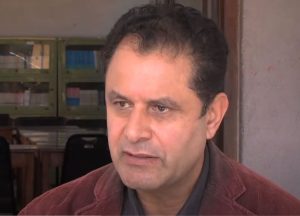Australia’s multiculturalism an example for the world
Australia is an iconic example of multiculturalism that values migrants and refugees for more than just the labour assets and skills they bring to the country, a leading international human rights leader says.
Dr Gopal Krishna Siwakoti, head of the Nepal–based human and civil rights group INHURED International, says Australia’s approach to multiculturalism has seen tolerance and equity “built in” to the system.
 Speaking at the inaugural Refugee Communities Association of Australia (RCAA) Dr Siwakoti said: “the emblematic things to be learned from Australia’s perspective of multiculturalism is the demographic aspect, particularly the built in tolerance and equality”.
Speaking at the inaugural Refugee Communities Association of Australia (RCAA) Dr Siwakoti said: “the emblematic things to be learned from Australia’s perspective of multiculturalism is the demographic aspect, particularly the built in tolerance and equality”.
“In Europe multiculturalism is more driven by labour demand. Here in Australia we see an iconic example of inclusive social participation,” he said.
“In Australia we see integration occurring in two ways. Top down and bottom up. Integration here is organic and there’s a sense of cherishing multiculturalism and integration which advances social cohesion.”
Dr Siwakoti said Australia has found a balance between the notion of a national community and identity and distinct diverse identities.
“The questions you ask when assessing multiculturalism: ‘how easy and fair is participation?’ and ‘how, generally, are voices of the unheard recognised and acted on?’ and ‘at what stage in the migration journey do people start to feel I belong here?” he said.
“Personally, I was resident in a western country for 13 years and I never felt I belonged there.
“Australia is a successful example for the world on a multiculturalism. Here, while preserving cultural identity is very possible, there is still a strong nation building effort and a sense of Australian identity.”
In summing up Australia’s brand of multiculturalism Dr Siwakoti cited the words United Nations Secretary General Antonio Guterres, when he was head of UNHCR, the UN’s refugee agency.
“At one of the global consultations on refugees Guterres told the gathering ‘I have seen a thriving multicultural environment on the streets of Footscray and Richmond in Melbourne’.
“He said: ‘this needs to be deeply understood, learned about and replicated by other communities; I want to see similar streets like Footscray and Richmond to be nurtured across Australia and in other parts of the world’.”
Dr Siwakoti said multiculturalism could help build countries across the globe.
“When refugees come they don’t just bring a bundle of clothes with them. They bring strengths and brain power,” he said.
“If countries take a whole of society approach – across the private, government, non-government, faith and community sectors – they can make the most of the aspirations of refuges.
“Australia has done well to recognise this,” Dr Siwakoti said.
UNHCR local representative Adrian Edwards told the conference, held in Melbourne, that Australia’s refugee program and support for multiculturalism was a ray of hope in a gloomy global environment.
“As the UN General Assembly meets this week, it’s a gloomy time. We have record forced displacement with 110 million refugees, global unity is under pressure, humanitarian organisations are facing billions of dollars in find shortfalls and countries host refugees are under pressure,” Mr Edwards said.
He said the announcement of an increase to 20,000 in Australia’s refugee intake was welcome as was the announcement of more complimentary pathways for refugees to settle in Australia.
“Australian is considered one of the world’s great resettlement countries with one million refugees settled since World War II,” Mr Edwards said.
“Settling and restoring people’s rights and helping to rebuild their lives is something that Australia does successfully and it matters across the world.
“It’s an example of what can be done and what needs to be done,” he said.












